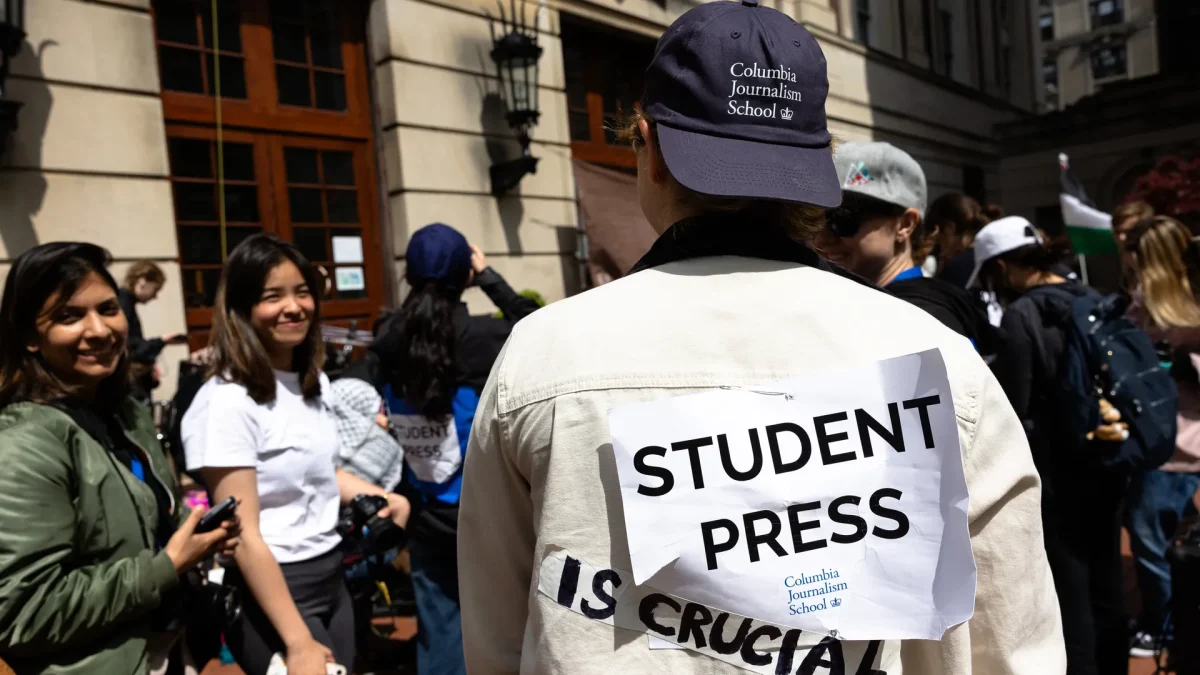Water refilling stations would reduce South’s environmental footprint
April 22, 2014
Water refilling stations are water fountains designed to fill water bottles and provide clean water, while reducing plastic water bottle waste. According to Elkay, a water refilling station supplier, “[Elkay’s water refilling station] saves money spent on plastic water bottles, the environment from plastic bottle pollution, and energy to produce plastic disposable bottles.”
The South High Green Tigers, an environmental group, has been working on waste reduction campaigns all year. One of their most notable campaigns is to install Elkay water refilling stations, water fountains that are designed to efficiently refill water bottles with purified drinking water, at South.
“[Water refilling stations] are a lot quicker than a water fountain… It’s filtered, cold, and tasty,” explained senior Avery Shoemaker.
According to Centers for Disease Control and Prevention, drinking water throughout the day may improve children’s and adolescent’s cognitive ability and energy. However, junior Becca Krasky, a Green Tigers member, noticed, ““People don’t like the taste of the water [from South’s water fountains]. It’s cloudy or it’s warm.”
Sophomore and Green Tigers member Emilio Del Carmen attributes students’ hesitation to fill up water bottles at drinking fountains to fear. “A lot of people are scared of lead in pipes and water that is at the school, which actually isn’t that big of an issue. It’s a phobia thing.”
The water refilling stations would resolve this by filtering and distributing cool, clear water. In addition, Krasky believes, “They’d make it a nicer place and more welcoming to visitors, students, and staff. It would [make it] easier to drink water and [it would] encourage hydration.”
“Who wants to sit there and be constantly going to the vending machine and buying water bottles?” Head engineer Laura Furey asked . “It’s kind of stupid. I drink four to six [disposable] water bottles a day. . . I’d use [the water refilling station], and I know a lot of the guys who I work with here would use it. I’m sure there are a lot of students and teachers that would use it too.”
Krasky explained, “By installing [water refilling] stations, we would like to reduce [the use of] plastic water bottles. We’d like to encourage students to use reusable water bottles and make it easier to do so. We’d like to improve water quality at South by making better water to drink.”
According to the Brita Hydration Station website, in 2008, 39 million single use plastic water bottles were used in the United States and only 31% of them were recycled. This introduces a number of negative environmental effects, including filling landfills, littering the ocean, overusing petroleum, air pollution, and wasting water.
“We’ve gotten to this culture that just throws out plastic,” explained chemistry teacher Grace Rousseau. “Well, that plastic doesn’t go away. It doesn’t go anywhere. It takes years upon years to even begin to have a breakdown.”
According to the website, Safe Bottles, it can take up to 1,000 years for a plastic water bottle to decompose.
“I think the one thing that people do not understand is, even if we do recycle them, they still have to be trucked,” Rousseau continued. “You’re running a truck that gets eight miles to a gallon, to collect trash. It’s not a very efficient system at all.”
Similarly, the Safe Bottles website reports that the plastic water bottle industry uses 1.7 billion liters of oil to distribute the water bottles in the USA. Additionally, they use 151 billion liters of oil and 272 billion liters of water each year to produce empty water bottles. Furthermore, the average person spends $588 dollars on the petroleum based product each year but 20% of the time, the water bottles are filled with tap water.
Del Carmen added, “The big issue with [plastic water bottles] is that the [water bottle companies] go to these local areas and just take water from their lakes. . . They don’t give anything to the communities that they take the water from . . . A big issue a lot of people have with this is that there were a bunch of droughts. These companies were still taking water [while] there wasn’t enough water for everyone.”
In addition to this injustice, Rousseau pointed out, “they throw [water bottles] in the trash. Once they throw it in the trash, if it can be incinerated, it goes into the incinerator system. And the incinerator in downtown [Minneapolis], next to Target Field, puts up all that smoke in the air. Guess where the Minneapolis Public Schools are that have the worst air quality?… downwind from that plant.”
“So there’s this whole set of other issues about that—there’s a social justice issue, why is it that the North side tends to pay for things like that, but the South side doesn’t?” Rousseau questioned. “There’s this whole set of social justice issues that result from that plastic use.”
With these issues in mind, the Green Tigers believe that a high school institution is large enough to make an environmental impact. Installing hydrations would be relatively easy according to Krasky, because they would use pre existing pipelines and the plumbers would do the installation for free.
Krasky explained, “To install the [water refilling] stations we have to take out the water fountain which makes us want to put [the water refilling station] somewhere where we had an old, gross water fountain.”
Furey believes as long as the district is okay with the project, there should be no problem installing it. “I think its great, there shouldn’t be any problems with putting it in or anything like that. Hopefully people will respect it and not get too physical with it.”
Last year, Southwest High School led a similar campaign, and at the beginning of this year, five water refilling stations were installed at Southwest. They did the project through their high school’s “Green Team,” a club similar to Green Tigers, according to Southwest senior Kia Okuma. Okuma has been a part of the Green Team since her freshman year and was the one who pitched the project and initiated contact with Elkay. Looking back, Okuma believes the project was a success.
“I think a lot of people like them. They are really convenient and nice. . . [The water refilling stations] were really helpful to a lot of people,” shared Okuma. “I think it is nice because it offers students a way to have a positive impact on the environment without having to think about it. I think it’s just the fact that it gives students mindless options to do things for our environment… the biggest part about it is that you don’t have to think about it to be helpful.”
Each of these Elkay water refilling stations costs $1,100. The Green Tigers have a goal to secure two water refilling stations and have them installed by the end of this school year.
According to Krasky, as of April 10th, “We’ve reached our goal of 500 dollars towards water refilling stations [raised from the Indi-go-go website]. We received $500 through Will Steger Foundation, $500 from [seling] t-shirts, and we are still $500 short. We’re still selling water bottle and t-shirts.”
Although the Green Tigers are still working on the logistics of getting them through Elkay, Krasky is hopeful that they will be installed by the end of the school year. Shoemaker believes that water refilling stations would be an important addition to South because, “It doesn’t even take that much to change your lifestyle and significantly reduce your waste . . . it’s important, the way I see it, that people of our generation develop sustainable habits because we are going to be the adults.”













